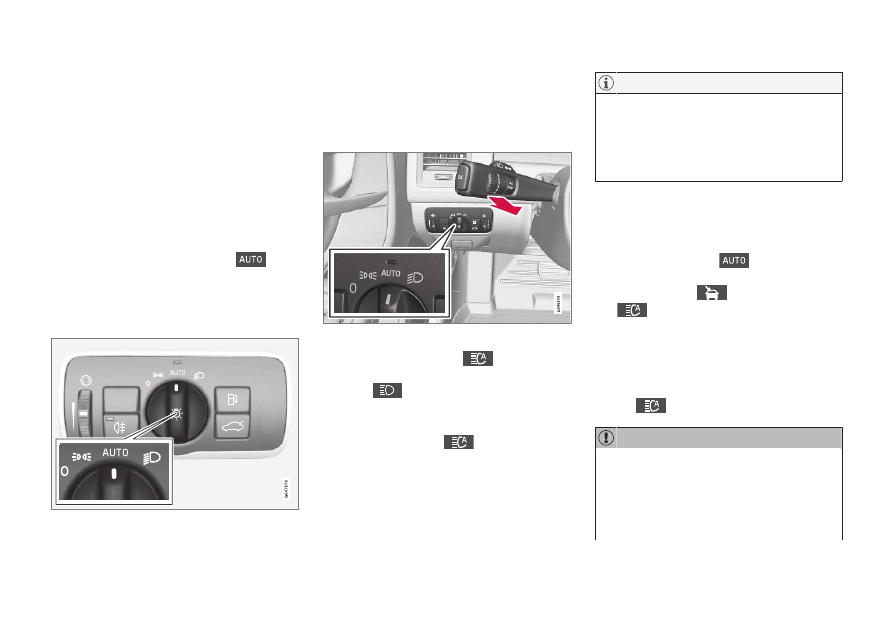Volvo V60 Cross Country (2018 year). Manual - part 6

INSTRUMENTS AND CONTROLS
* Option/accessory.
94
Active high beams (AHB)*
AHB uses a camera at the upper edge of the
windshield to detect the headlights of oncoming
vehicles or the taillights of a vehicle directly
ahead. When this happens, the headlights will
automatically switch from high beams to low
beams. When the camera no longer detects the
headlights/taillights of other vehicles, your head-
lights will switch back to high beams after sev-
eral seconds.
To activate AHB:
•
Turn the headlight control to the
posi-
tion.
The feature will begin functioning if the engine
has been running for at least 20 seconds and the
vehicle's speed is at least 12 mph (20 km/h).
Headlight switch in the AUTO position
Switch AHB on or off by pulling the left steering
wheel lever rearward (toward the steering wheel)
as far as possible and releasing it. If AHB is
switched off while the high beams are on, the
headlights will change to low beams.
Models with an analog instrument panel
When AHB is activated, the
symbol will
illuminate in the instrument panel. The high beam
indicator (
) in the instrument panel will also
illuminate when the high beams are on.
Models with a digital instrument panel
When AHB is activated,
will illuminate as a
white symbol in the instrument panel. When the
high beams are on, the symbol will change to
blue.
•
Keep the windshield in front of the cam-
era free of ice, snow, dirt, etc.
•
Do not mount or in any way attach any-
thing on the windshield that could
obstruct the camera.
If
Active high beam Temporary unavailable
Switch manually
is displayed in the instrument
panel, switching between high and low beams will
have to be done manually. However, the light
switch can remain in the
position. The
same applies if
Windscreen Sensors blocked
is displayed and the
symbol is displayed.
The
symbol will go out when these mes-
sages are displayed.
AHB may be temporarily unavailable (e.g., in
heavy fog or rain). When AHB becomes active
again or if the sensors in the windshield are no
longer obscured, the messages will disappear
and the
symbol will illuminate.
In the following situations, it may be neces-
sary to switch between high and low beams
manually:
•
In heavy fog or rain
•
In blowing snow or slush